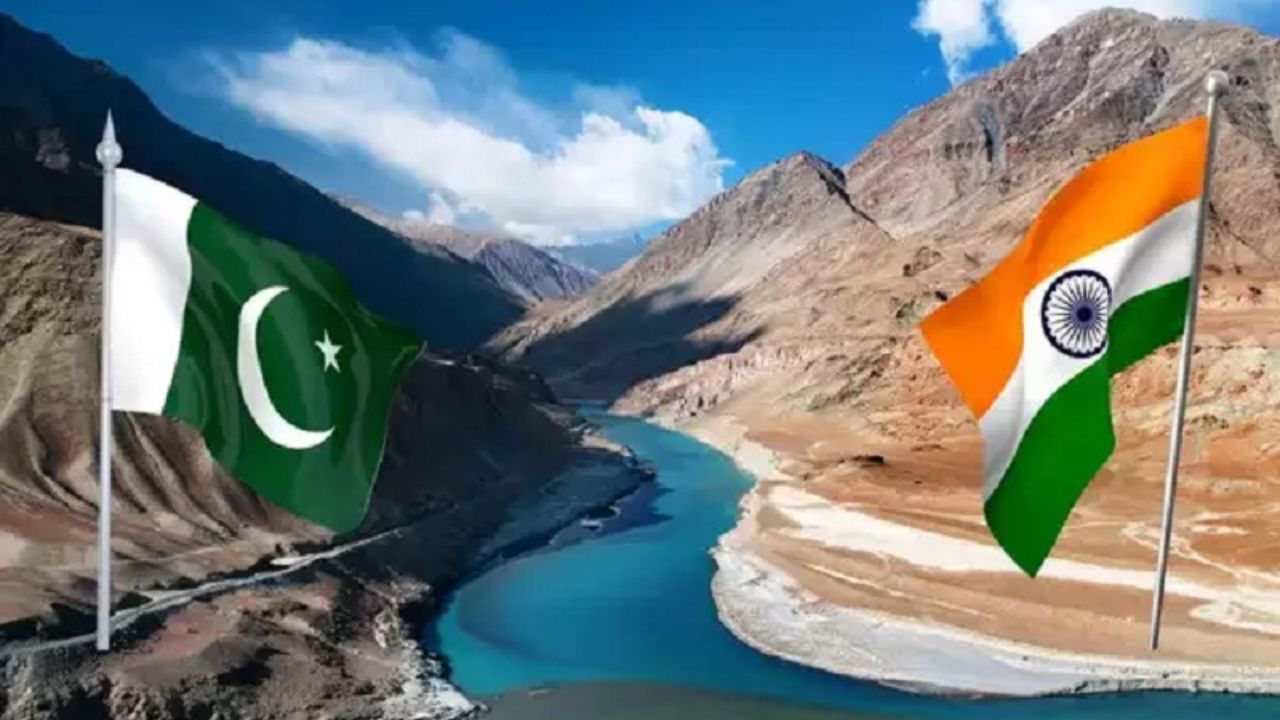The Indus Water Treaty (IWT), signed in 1960, is a cornerstone of water-sharing diplomacy between India and Pakistan. This landmark agreement, facilitated by the World Bank, governs the use of the Indus River system’s waters, a vital resource for both nations. With growing geopolitical tensions and environmental challenges, the treaty remains a focal point in 2025. This article examines the treaty’s history, provisions, disputes, and its relevance today, crafted for clarity and search engine visibility.
What is the Indus Water Treaty?
The Indus Water Treaty is a water-sharing agreement that allocates the use of the Indus River and its tributaries between India and Pakistan. Signed on September 19, 1960, in Karachi, it is one of the most enduring treaties between the two nations, surviving multiple conflicts. The treaty was prompted by the 1947 partition, which divided the Indus Basin, leading to disputes over water rights.
- Purpose: Ensure fair distribution of water for agriculture, hydropower, and domestic use.
- Mediators: The World Bank led negotiations, supported by the United States and other Western nations.
- Signatories: Indian Prime Minister Jawaharlal Nehru and Pakistani President Ayub Khan.
Why Was the Treaty Necessary?
The Indus River system, including the Indus, Jhelum, Chenab, Ravi, Beas, and Sutlej rivers, is essential for agriculture, a key economic driver for both nations. The 1947 partition positioned India as the upper riparian state, controlling the headworks of rivers flowing into Pakistan, the lower riparian state. Tensions escalated when India restricted water flow to Pakistan in 1948, necessitating a formal agreement.
Key Provisions of the Indus Water Treaty
The treaty divides the six rivers of the Indus system into eastern and western groups, assigning them as follows:
- Eastern Rivers (assigned to India): Ravi, Beas, and Sutlej for India’s unrestricted use.
- Western Rivers (assigned to Pakistan): Indus, Jhelum, and Chenab, with Pakistan holding primary rights, though India can use them for non-consumptive purposes like hydropower.
- Financial Support: India paid $60 million to Pakistan for building replacement infrastructure, such as the Mangla and Tarbela dams.
- Dispute Resolution: The Permanent Indus Commission (PIC) oversees implementation, with provisions for arbitration or neutral experts for disagreements.
- Data Exchange: Both nations must share data on river flows and project plans to maintain transparency.
The treaty permits India limited use of western rivers for domestic, industrial, and hydroelectric projects, provided they do not significantly reduce water flow to Pakistan. This framework supports both nations’ agricultural and energy needs.
Role of the World Bank
The World Bank’s mediation was instrumental in resolving early disputes. It suggested dividing the rivers rather than sharing their waters, a solution both nations accepted. The Bank also created a development fund to support Pakistan’s infrastructure projects, ensuring the treaty’s execution.
Historical Context and Negotiations
Negotiations for the IWT began in 1952 and spanned nearly a decade. Key milestones include:
- 1948 Water Dispute: India’s temporary halt of water flow to Pakistan intensified tensions.
- 1952-1954: World Bank-led talks addressed technical and financial aspects.
- 1960: Agreement finalized after Pakistan prioritized financial compensation for infrastructure development.
The treaty’s success stems from its detailed engineering guidelines and dispute resolution mechanisms, which have endured three wars between India and Pakistan.
Disputes and Challenges in 2025
Despite its longevity, the IWT faces ongoing challenges due to geopolitical tensions, climate change, and infrastructure projects. Major disputes include:
- Baglihar and Kishenganga Dams: Pakistan has raised concerns over India’s hydroelectric projects on the Chenab and Jhelum rivers, citing potential impacts on water flow. The Baglihar issue was resolved in 2007 by a neutral expert, while Kishenganga went to arbitration in 2013.
- India’s Review Request: In 2024, India formally sought to revise the treaty, citing population growth, environmental concerns, and clean energy demands. This has alarmed Pakistan, which depends on the western rivers for 80% of its irrigation.
- Climate Change: Reduced glacial melt and unpredictable monsoons threaten water availability, challenging the treaty’s fixed allocations.
- Geopolitical Strains: Remarks like Indian Prime Minister Narendra Modi’s 2016 statement, “blood and water cannot flow together,” have heightened Pakistan’s fears of India leveraging its upstream position.
Recent Developments
In 2025, discussions about the treaty remain contentious. India’s call for renegotiation faces opposition from Pakistan, which views the treaty as critical for its agriculture-based economy. The World Bank has encouraged both nations to address disputes within the treaty’s framework, but progress remains limited.
Why the Indus Water Treaty Remains Relevant
The IWT is more than a water-sharing agreement; it’s a symbol of diplomatic endurance. Its significance in 2025 includes:
- Economic Impact: The Indus system irrigates 80% of Pakistan’s farmland and supports India’s agricultural and energy sectors.
- Regional Stability: The treaty reduces water-related conflicts in a tense region.
- Climate Adaptation: As water scarcity grows, the treaty’s framework could guide future cooperation.
However, Pakistan’s projected water scarcity by 2025 and India’s increasing energy demands underscore the need for updates. Joint efforts, such as shared climate research or improved dispute resolution, could strengthen the treaty.
Tips for Understanding and Engaging with the Treaty
For researchers, policymakers, or students interested in the IWT, consider these steps:
- Review Primary Sources: Study the treaty text and World Bank archives for accurate information.
- Stay Updated: Follow trusted news sources for updates on India-Pakistan water discussions.
- Connect with Experts: Participate in forums or webinars hosted by water management or geopolitical analysts.
- Analyze Trends: Use tools like Google Trends to monitor public interest in the treaty.
Conclusion
The Indus Water Treaty stands as a testament to diplomatic cooperation, securing water resources for India and Pakistan for over six decades. However, evolving challenges—geopolitical tensions, climate change, and infrastructure disputes—require renewed dialogue. By understanding its history, provisions, and current dynamics, stakeholders can contribute to preserving this critical agreement. Stay informed and engage with this topic to support a sustainable future for the Indus Basin.

